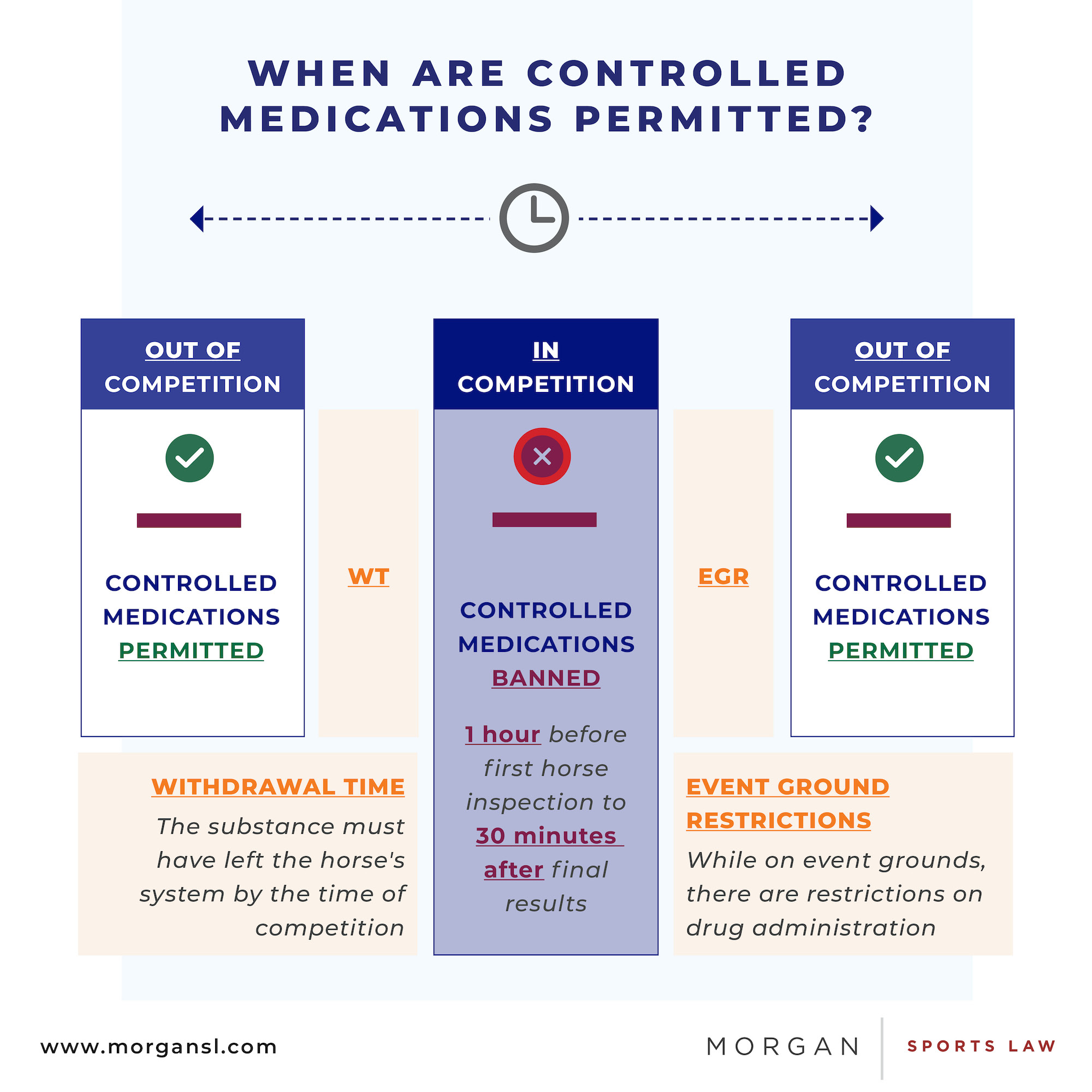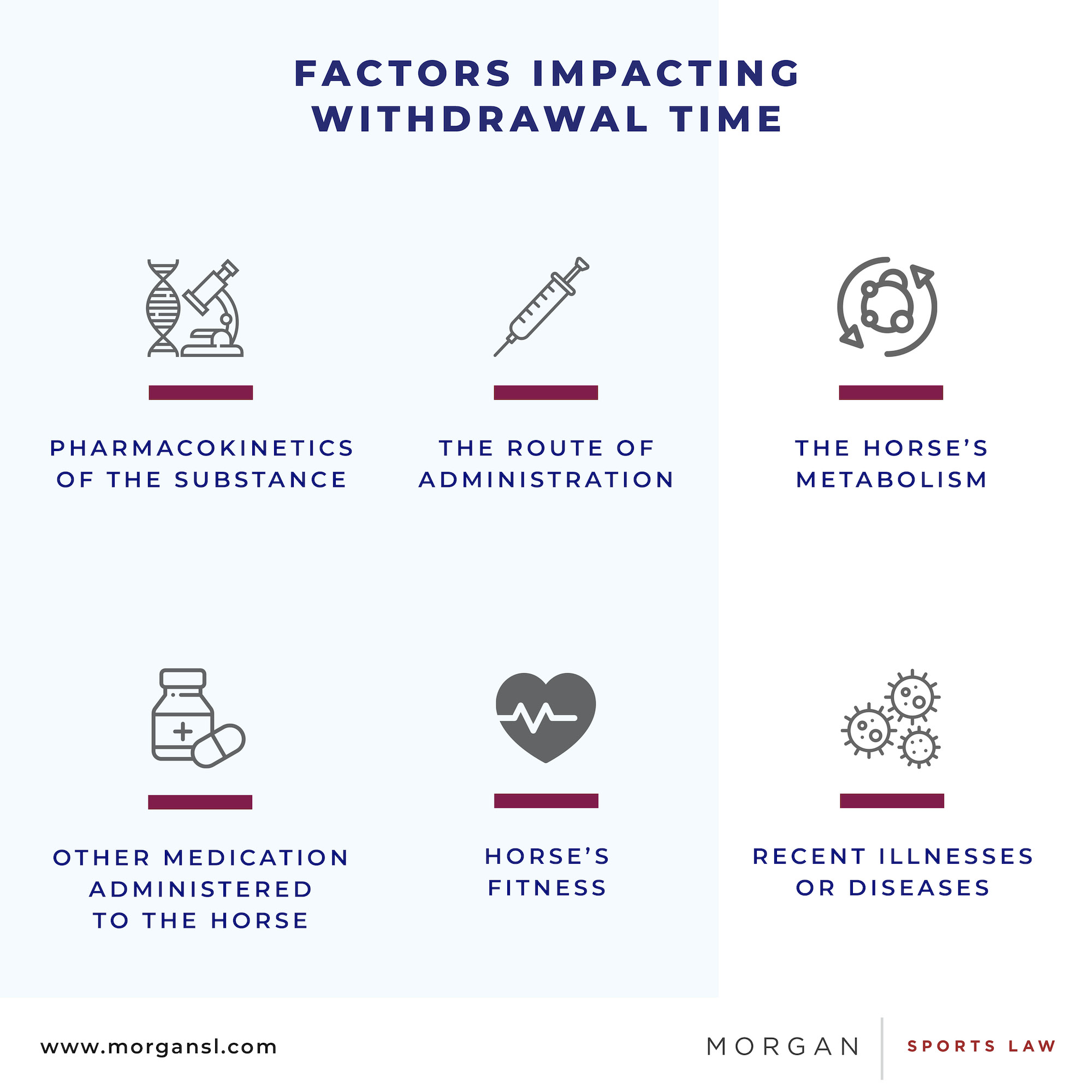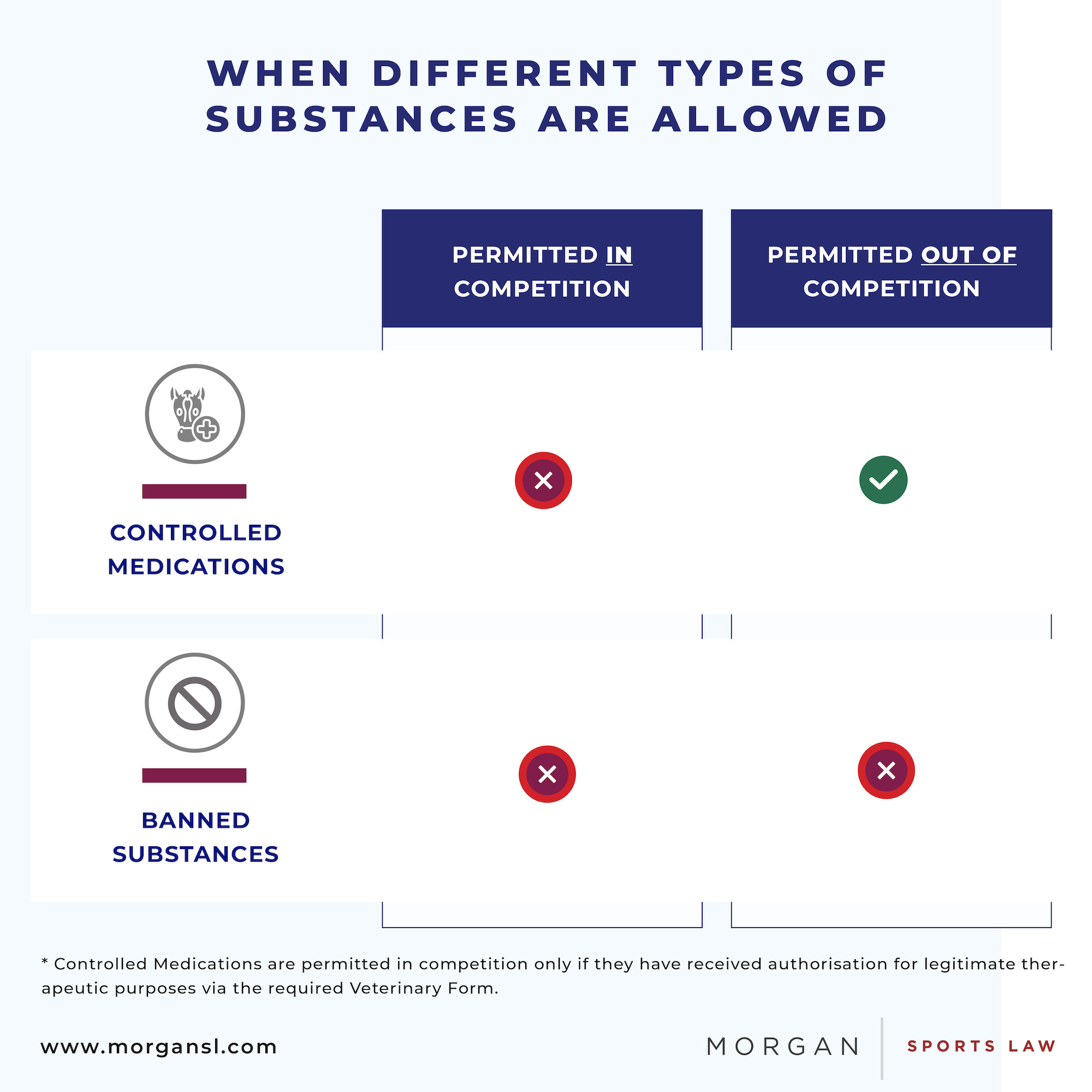Controlled Medications & Withdrawal Times
Stringent anti-doping control in equestrian sports is crucial, not only for fair competition but also for the welfare of the horses involved. The Fédération Equestre Internationale (FEI), the governing body for equestrian sport, has strict anti-doping regulations in place, for that very reason.
There are separate rules for two groups of prohibited substances: Controlled Medications and Banned Substances. This article will explain the difference between both, focusing on the requisite withdrawal times for Controlled Medications.
Controlled Medications
Controlled Medications are substances that may be used to treat medical conditions in horses but are subject to restrictions because they have the potential to affect performance and/or because they present a welfare risk to horses. These substances are permitted out of competition but are banned in-competition (except for when authorised by a Veterinary Form for legitimate therapeutic use). Typically, the in-competition period starts one hour before the beginning of the first horse inspection and runs until 30 minutes after the announcement of the final results of the event.

The FEI’s list of Controlled Medications consists of common therapeutic substances including:
- non-steroidal anti-inflammatory drugs, such as Bute (Phenylbutazone), Oxyphenbutazone, Flunixin and Carprofen
- other pain relievers, such as Paracetamol, Codeine, Dexamethasone, Morphine, Triamcinolone Acetonide and Betamethasone
- sedatives, such as Magnesium sulphate (injection) and Detomidine
- stimulants, such as Caffeine
- antihistamines, such as Cetirizine
- respiratory treatments, such as Clenbuterol
Withdrawal Times
An important aspect of the Controlled Medication rules is the concept of withdrawal times, i.e. how long it takes for a Controlled Medication to leave a horse’s system once administered. This is because even though Controlled Medications can be administered out of competition, the substance must have left the horse’s system by the time of the competition to avoid the risk of committing an anti-doping rule violation.
Withdrawal times are determined based on various factors, including the pharmacokinetics of the substance, the route of administration, the horse’s metabolism, other medication being administered to the horse, its degree of fitness and any recent illnesses or diseases suffered.

The FEI publishes a list of “detection times” for certain Controlled Medications, but the FEI emphasises that “detection times” are not the same as “withdrawal times” and that a “safety margin” should always be factored in.
Numerous equine anti-doping rule violations have been caused by riders (or their support personnel) failing to leave sufficient time for the Controlled Medication to clear their horse’s body. The presence of any prohibited substance in a horse’s sample is considered a violation of the FEI’s anti-doping rules, regardless of the reason for its presence. Therefore, in most of these cases, the rider (and trainer, if in endurance) will face sanctions, such as a suspension from competition, a fine and a contribution to legal costs, in addition to the automatic disqualification of the results from the relevant event.
The starting point for a suspension for a Controlled Medication violation is 6 months, but this can be increased if there are aggravating factors and / or it is not the rider / trainer’s first offence.
The sanctions may also be reduced but normally only if the rider / trainer can prove that they had rigorous anti-doping protocols in place and took all reasonable steps to avoid a rule violation (for example, if they rely on a trustworthy veterinarian who applied the incorrect withdrawal time as a one-off error). It is not easy to prove this – solid evidence of the protocols in place and character references, as well as concrete evidence of how the administration occurred, will often be required.
Accordingly, it is essential for riders and trainers to work closely with veterinarians to ensure the correct withdrawal times are applied after administering Controlled Medications.
Banned Substances
In contrast to Controlled Medications, Banned Substances are prohibited in horses at all times. The FEI classifies Banned Substances as those that have no legitimate use in a competition horse, could enhance performance and/or could jeopardize the welfare of the horse. The FEI’s list includes:
· anabolic steroids, such as Stanozolol and Boldenone
· pain relievers, such as Oripavine and Tramadol
· beta agonists which can increase muscle mass, such as Ractopamine and Zilpaterol
· stimulants such as Strychnine and Arsenic
· Diisopropylamine which can improve can increase oxygen utilization
The sanctions regime for violations involving Banned Substances is considerably harsher than the sanctions regime for violations involving Controlled Medications. It is therefore essential for riders, trainers and veterinarians to be very careful that horses are not exposed to Banned Substances. That being said, it is of course occasionally the case that positive tests are caused by innocent or inadvertent causes (e.g. contamination), which can – if properly evidenced – result in the reduction or elimination of the otherwise applicable sanctions.
Conclusion
Controlled Medications, when used appropriately, can aid in supporting the welfare and health of horses whilst still allowing them to compete. Riders and their support teams must, however, be diligent – and take all necessary precautions to ensure that suitable withdrawal times are applied, to avoid the substance still being in the horse’s system at the time of an event.
Equally, riders, trainers and veterinarians need to be diligent in ensuring that horses are not exposed to Banned Substances (whether inadvertently or otherwise), due to the risks to the welfare of horses and due to the draconian penalties that can ensue.
Authored by
Emma Waters
Senior Associate
Equestrian Services Team
Ellen Kerr
Trainee Solicitor
Equestrian Services Team
Footnote
1. The in-competition period differs at the Olympic Games and Paralympic Games.


